Costs of US-led “war on terror” after 9/11: $8 trillion and 900,000 deaths
Editor's Note: Sept. 11, 2021 marks the 20th anniversary of the 9/11 terror attacks on the World Trade Center Twin Towers in New York City in the US. After the tragedy, the US initiated a global “war on terror”, which has since caused extremely serious civilian casualties and property damage, while leading to horrific humanitarian disasters.
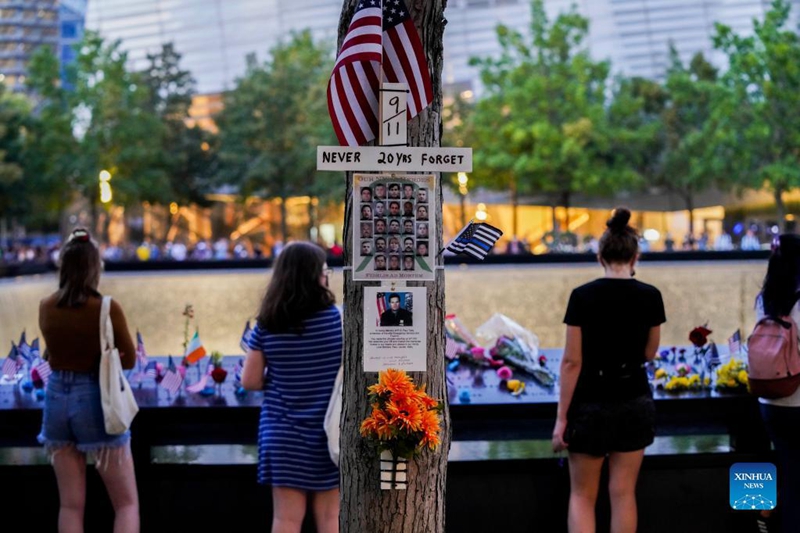
People mourn for the victims at the National September 11 Memorial & Museum in New York, the United States, Sept. 11, 2021. (Xinhua/Wang Ying)
Enormous cost
Duration: 20 years
Cost: approximately $8 trillion
Deaths: approximately 900,000 people
Nearly 20 years of post-9/11 wars have cost the US an estimated $8 trillion and have killed over 900,000 people, according to a report from the Costs of War project at Brown University.
Debt in blood
The Afghanistan War
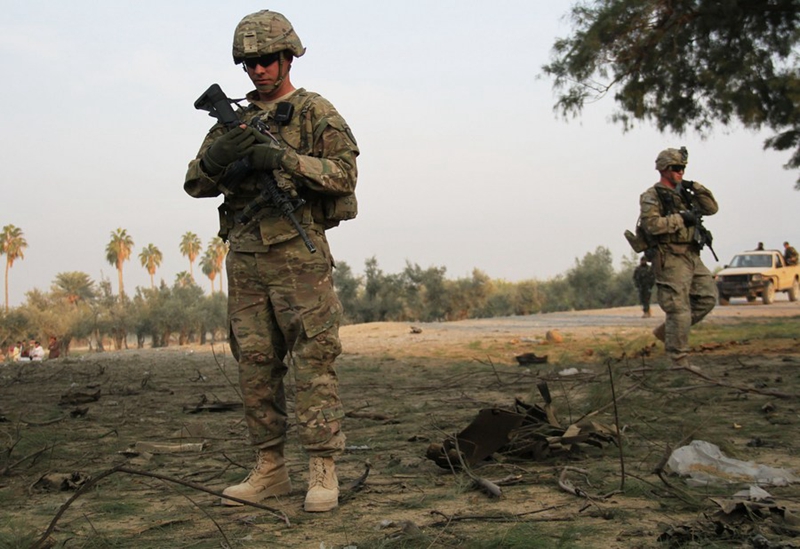
U.S. soldiers stand guard at the site of car bombing in Nangarhar Province, east Afghanistan, Jan. 5, 2015. (Xinhua/Tahir Safi)
Casualties: led to the deaths of more than 30,000 civilians; injured more than 60,000 civilians
Refugees: 11 million people
Economic loss: generated an average loss of $60 million per day
The Iraq War
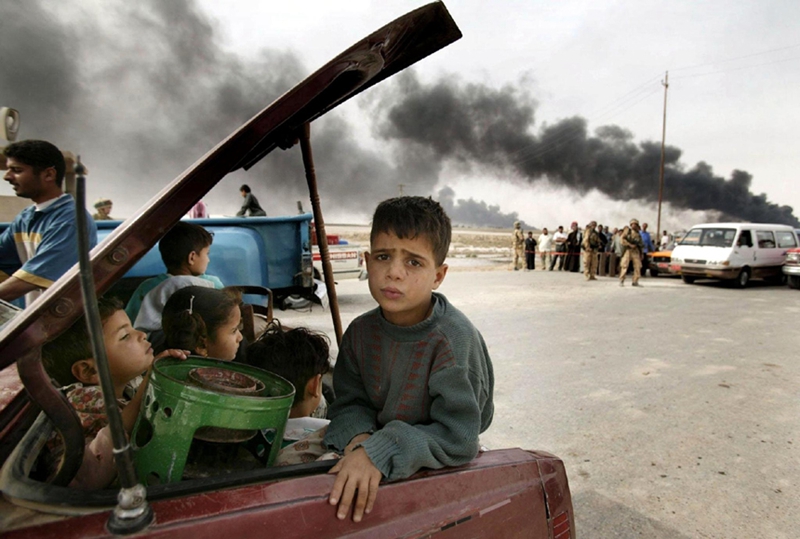
Several Iraqi children squeeze into the trunk of a car to escape from Basra on March 30, 2004. (Photo/Xinhua)
Casualties: around 200,000 to 250,000 civilian deaths, including 16,000 directly caused by US forces
Refugees: 3.25 million
Damage: US forces were also found to have seriously violated international humanitarian principles along with perpetrating a series of “prisoner abuse incidents”
US-led coalition forces made use of a large number of DU bombs, cluster bombs, and white phosphorus bombs in Iraq, and did not take any measures to minimize the damage these bombs inflicted upon civilians.
According to estimates from the United Nations, there are still 25 million mines and other explosive remnants that need to be removed in Iraq.
The Syrian War
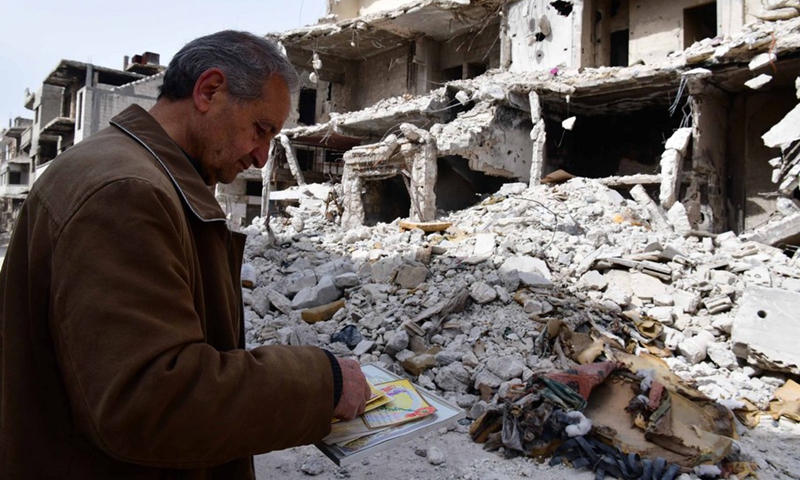
Hadi Ghusoun, a retired English teacher in his late 60s, looks at old certificates, which he had found under the rubble of his shattered house in Homs city in central Syria, March 11, 2021.(Photo: Xinhua)
Casualties: Between 2016 and 2019, the confirmed number of war-related civilian deaths amounted to 33,584 in Syria, while the number of Syrian civilians directly killed by US-led airstrikes reached 3,833, with half of them being women and children
Refugees: About 15,000 Syrian doctors (about half of the country’s total) have fled the country, while 6.5 million people inside the country were left displaced and homeless and about 5 million Syrians had to escape abroad.
According to a survey conducted by the World Food Programme in April 2020, about one-third of Syrians were facing a food shortage crisis, and 87 percent of Syrians had no deposits left in their accounts.
Disastrous Consequences
The US-led “war on terror” has directly led to horrific humanitarian disasters in the affected war-torn countries, contributing to personnel casualties, damage to facilities, production stagnation and, most especially, civilian casualties.
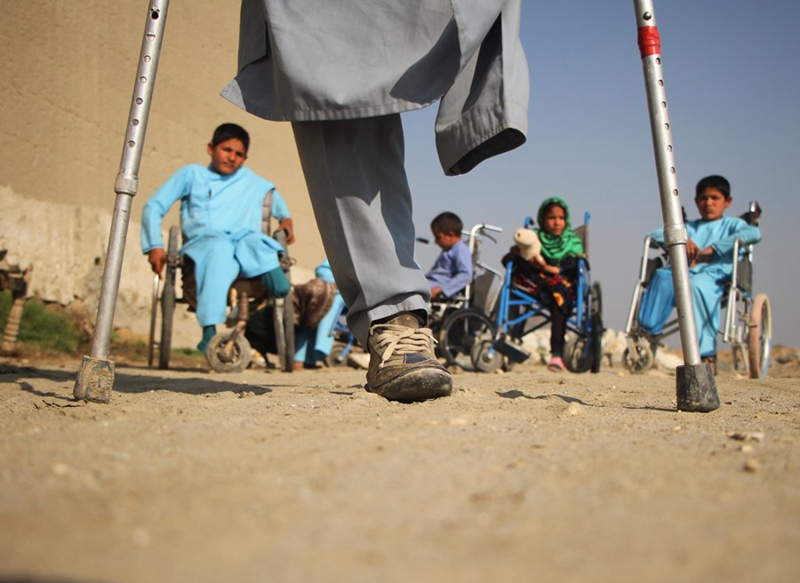
An Afghan disabled child walks with crutches in Surkh Rod district of Nangarhar province, eastern Afghanistan, Feb. 22, 2020. (Photo by Saifurahman Safi/Xinhua)
The US-led campaign has also brought about a series of complex social problems, such as waves of refugees, social unrest, ecological crises, and psychological traumas.
The “war on terror” has often produced spillover effects, causing harm to the countries that were not themselves involved in the wars.
For example, when attacking suspected terrorists during the Afghanistan War, US aircraft and drones often dropped bombs on neighboring Pakistani villages, and even on wedding cars and Pakistani border guard soldiers.
Even the US itself has fallen victim to the war on terror it has started.
Between 2001 and 2005, about one-third of the 103,788 veterans returning from the wars in Iraq and Afghanistan were diagnosed with mental or psychological illness, and 56 percent of those diagnosed had more than one disease.
When the US started the Afghanistan war under the pretext of counter-terrorism in 2001, the country claimed that it would eradicate terrorism and help the Afghan people rebuild their homeland. However, nearly two decades later, the US has instead opted to hastily pull out its troops from Afghanistan all while the number of terrorist organizations in Afghanistan continues to multiply, national reconstruction efforts stall and Afghans remain subject to a life of abject poverty.
What the US did in Afghanistan over the past 20 years shows that its wanton military intervention and attempts to impose American ideology and values on others will not help resolve the issues at hand. It is a US approach that is ultimately doomed to fail.
Photos
Related Stories
- U.S. 20th 9/11 commemoration highlights need to reflect on "war on terror"
- UN chief marks 20th anniversary of 9/11 attacks
- 9/11 victims commemorated in New York, U.S.
- Waves of Flags displayed to honor victims of 9/11 attacks in U.S.
- China’s FM urges US to learn lesson from Afghan war on 20th anniversary of 9/11
- 9/11 20 years on: What US 'anti-terrorism' wars left behind
Copyright © 2021 People's Daily Online. All Rights Reserved.










